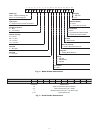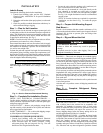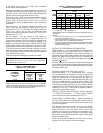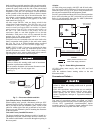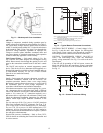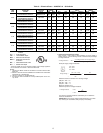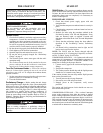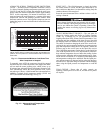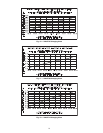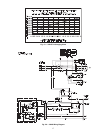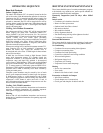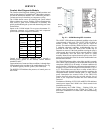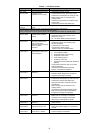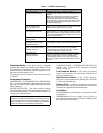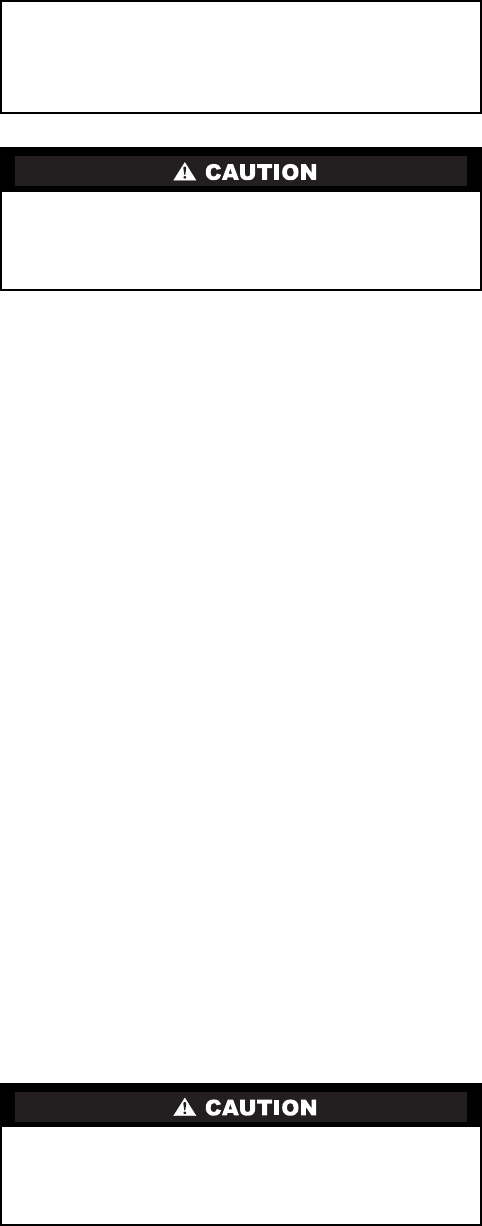
14
PRE-START-UP
System Check
1. Check all air handler(s) and other equipment auxiliary
components. Consult the manufacturer’s instructions
regarding any other equipment connected to the con-
densing unit. If the unit has field-installed accessories,
be sure all are properly installed and correctly wired. If
used, the airflow switch must be properly installed.
2. Be sure the unit is properly leak checked and dehydrated.
3. Check tightness of all electrical connections.
4. Open the liquid line and suction line service valves.
5. Be sure the unit is properly charged. See “Preliminary
Charge”, on page 9.
6. The electrical power source must agree with the unit’s
nameplate rating.
7. The crankcase heater must be firmly attached to the com-
pressor crankcase. Be sure the crankcase is warm (heater
must be on for 24 hours before starting compressor).
Turn On Crankcase Heater — Turn on the crankcase
heater for 24 hours before starting the unit to be sure all the
refrigerant is out of the oil. To energize the crankcase heater,
proceed as follows:
1. Set the space thermostat set point above the space tem-
perature so there is no demand for cooling.
2. Close the field disconnect.
Preliminary Charge — Before starting the unit, charge
liquid refrigerant into the high side of the system through the
liquid service valve. The amount of refrigerant added must be
at least 80% of the operating charge listed in the Physical Data
table (Tables 1A and 1B, pages 4 and 5). Allow high and low
side pressures to equalize before starting compressor. If
pressures do not equalize readily, charge vapor on low side of
system to assure charge in the evaporator. Refer to GTAC II,
Module 5, Charging, Recover, Recycling, and Reclamation for
liquid charging procedures.
START-UP
38AUZ Units — The compressor crankcase heater must be
on for 24 hours before start-up. After the heater has been on for
24 hours, the unit can be started. If no time elapsed since the
preliminary charge step was completed, it is unnecessary to
wait the 24-hour period.
PRELIMINARY CHECKS
1. Check that electric power supply agrees with unit
nameplate data.
2. Verify that the compressor crankcase heater is securely in
place.
3. Check that the compressor crankcase heater has been on
at least 24 hours.
4. Recheck for leaks using the procedure outlined in the
Pre-Start-Up section, Leak Test and Dehydration. If any
leaks are detected, repair as required. Evacuate and
dehydrate as described in the Leak Test and Dehydration
section.
5. Ensure that the preliminary charge has been added as
described in the Pre-Start-Up section, Preliminary
Charge.
6. All internal wiring connections must be tight, and all
barriers and covers must be in place.
NOTE: The 38AUZ units are factory charged with the
required amount of oil. If recharging in required, use Emka-
rate RL 32-3MAF for the 38AUZ units.
COMPRESSOR ROTATION — On 3-phase units with scroll
compressors, it is important to be certain that the compressor is
rotating in the proper direction. To determine whether or not
compressor is rotating in the proper direction:
1. Connect service gages to the suction and liquid pressure
fittings.
2. Energize the compressor.
3. The suction pressure should drop and the liquid pressure
should rise, as is normal on any start-up.
If the suction pressure does not drop and the liquid pressure
does not rise to normal levels:
1. Turn off power to the unit, tag disconnect.
2. Reverse any two of the unit power leads.
3. Reapply power to the compressor, verify correct
pressures.
The suction and liquid pressure levels should now move to
their normal start-up levels.
COMPRESSOR OVERLOAD — This overload interrupts
power to the compressor when either the current or internal
motor winding temperature becomes excessive, and automati-
cally resets when the internal temperature drops to a safe level.
This overload may require up to 60 minutes (or longer) to reset.
If the internal overload is suspected of being open, disconnect
the electrical power to the unit and check the circuit through the
overload with an ohmmeter or continuity tester.
IMPORTANT: Before beginning Pre-Start-Up or Start-Up,
review Start-Up Checklist at the back of this book. The
Checklist assures proper start-up of a unit and provides a
record of unit condition, application requirements, system
information, and operation at initial start-up.
UNIT DAMAGE HAZARD
Do not attempt to start the condensing unit, even
momentarily, until the following steps have been
completed. Compressor damage may result.
UNIT DAMAGE HAZARD
Prior to starting compressor, a preliminary charge of
refrigerant must be added to avoid possible compressor
damage.



